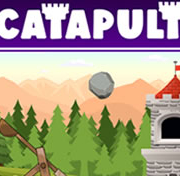Johannes Gutenberg Facts, Science Game
Who was Johannes Gutenberg? This game will help children learn key facts about the German inventor, Johannes Gutenberg. Widely known for his invention of the movable type printing press, Gutenberg began a printing revolution that allowed the mass production of copies of books and other print materials for the first time. This invention is critical because it allowed knowledge to be shared more widely than was previously possible. Play this game to learn key facts about Johannes Gutenberg.
Johannes Gutenberg Facts You May Not Know
Learn about the life and times of the inventor of the printing press, Johannes Gutenberg. His invention made books affordable for Europeans. In this article, we will learn about his political exile and financial misadventures. The earliest books were made from wood, so Gutenberg could afford to print more than one copy. His invention led to a revolution in printmaking, which ultimately changed the world. Listed below are a few Johannes Gutenberg Facts that you may not know.
Johannes Gutenberg's invention made books affordable for Europeans
The invention of the printing press began a revolution in printing, spurring repeated advances in technology and the spread of the ideals of freedom and information exchange. By the late fifteenth century, Gutenberg's printing press had made books affordable for Europeans and had helped to spread those ideals throughout the continent. In addition to books, Gutenberg's invention paved the way for the first newspapers. These early newspapers primarily reported on current events and were found in most major cities throughout Europe.
Gutenberg was born to a wealthy patrician, and acquired metalworking skills from his father. As a result, he was forced to leave Mainz in 1428 and move to Strassburg, which is now Strasbourg. During his time there, he engaged in gem cutting and taught several students. A few years later, in 1455, Gutenberg completed the first 42-line Bible, printed on paper and vellum.
Gutenberg's financial misadventures
Johann Gutenberg's business ventures were fraught with peril. His first misstep was a loan to Arnold Gelthus from whom he borrowed 800 guilders. Originally intended to purchase 100 cows and a few small farms, Gutenberg incurred debts of more than 2000 guilders by the time he completed his great Bible in 1456. This event was delayed by a flood, and Gutenberg could not repay the loans.
The details of Gutenberg's family life were not known for nearly 15 years. In 1428, he was exiled from his native Mainz and moved to Strassburg, which is now Strasbourg. There, he engaged in gem cutting and teaching a few students. It was not clear whether Gutenberg ever married or fathered a child, but the court records for the years 1436-37 indicate that he broke a promise to a woman.
Gutenberg's political exile
Johannes Gutenberg was born in Mainz and went on to live in Strasbourg, Germany. He became fascinated with industrial machines and developed winery machinery. His other interests were blacksmithing and goldsmithing. A keen learner, Gutenberg also learned Latin. Gutenberg's political exile was the most significant cause of his demise. He was forced into exile in 1439 after staging a successful uprising against an aristocrat in Mainz.
In the midst of his political exile, Gutenberg produced his folio Bible, an impressive work of art. It had 42 lines per page, and sold for 30 florins, which was about three years' pay for an average clerk. Gutenberg was able to produce the folio Bible in a relatively short time compared to other manuscripts, which took a scribe a year to produce. Two complete copies of Gutenberg's folio Bible are preserved in the British Library. Its lack of modern features, such as page numbers, indentations, and margins, is a testament to Gutenberg's influence.










